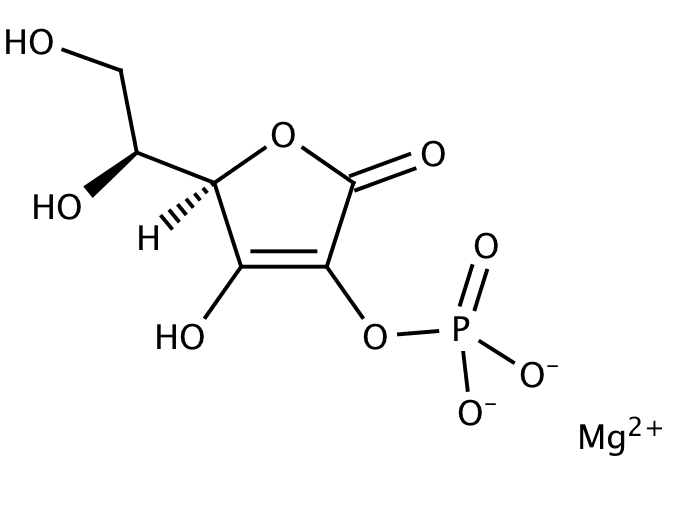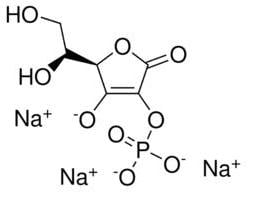3-O-ethyl-L-ascorbic acid and L-ascorbic acid are vitamin C derivatives. Their INCI name is Ethyl Ascorbic Acid. They brighten dull skin, protect it from free radicals, eliminate hyperpigmentation, and stimulate collagen production. You can choose either, confident that you will be adding an excellent active to your skincare routine, although each has its own benefits and limitations to be considered.
Vitamin C's clinical benefits range from antiaging and photoprotection to anti-pigmentation. It perfectly combines efficiency with an excellent safety profile, making it a beloved cosmeceutical agent.
3-O-ethyl-L-ascorbic acid works the same way as L-ascorbic acid, but the former is more stable. However, L- ascorbic acid is more potent and has been extensively researched.
Additionally, other vitamin C derivatives, such as ascorbyl-6-palmitate and magnesium ascorbyl phosphate (MAP), are worth considering and giving a try.
What Is L-Ascorbic Acid?
Vitamin C is available in a wide variety of active forms.
Among all chemical formulations, L-ascorbic acid is the most biologically active and well-researched. It works better at a concentration range of 10-20%; greater than 20% doesn't improve levels in the skin or biological significance.
Even though L-ascorbic acid is potent and effective, it easily oxidizes under light exposure, heat variations, pH change, and the presence of other ions. It will only stay active in skincare products for a short shelf life before oxidizing and turning brown.
Indeed, L-ascorbic is a highly unstable vitamin C derivative. It is a hydrophilic and charged molecule, which translates into poor skin penetration. These two features mean that L-ascorbic acid will immediately bind to water molecules upon contact with the skin, making it difficult to pass through the deep skin's hydrophobic layers.
L-ascorbic acid stability and antioxidant properties can be greatly improved when combined with vitamin E and ferulic acid. These adjuvants reduce the acidity of the L-ascorbic acid molecule to a pH below 3.5, changing the molecule to an uncharged state and increasing its stability and skin permeability.
However, this can result in skin irritation, especially for skin-sensitive types, as the skin's natural pH is around 4.75-5.5.
The Difference Between 3-O-Ethyl-L-Ascorbic Acid and L-Ascorbic Acid
Several vitamin C derivatives have come to the picture, combining stability, a neutral pH, and efficacy to overcome the L-ascorbic acid shortcomings.
Among the derivatives, ethyl ascorbic acid stands out as a good option worth trying. It is gentle yet highly effective.
Ethyl ascorbic acid is also known as 3-O-ethyl-L-ascorbic acid. It combines the original vitamin C chemical structure and an ethyl group bound to the third carbon, hence the name. This chemical variation makes ethyl ascorbic acid a highly stable vitamin C derivative, soluble in water and oil.
Certainly, 3-O-ethyl-L-ascorbic acid takes things further and improves the molecules' stability and its transportation efficacy to the skin, being absorbed faster and better. Additionally, it is less irritating to the skin.
The two chemicals (3-O-ethyl-L-ascorbic acid and L-ascorbic acid) may have different structures, but they deliver the same skin benefits. Cosmetic case studies demonstrate that they have skin brightening, collagen stimulating, and antioxidant properties.
Other Vitamin C Derivatives
There are more derivatives of vitamin C than you might think, and while they work in the same way and have similar effects, there are subtle differences between them as well.
Magnesium Ascorbyl Phosphate

Magnesium ascorbyl phosphate (MAP) is considered a highly stable vitamin C derivative. It is deemed to be light-stable and oxygen-stable. MAP formulated in aqueous solutions can retain up to 95% of its potency at 40°C without needing any pH adjustment.
MAP comes in concentrations around 5%. It has a neutral skin pH (pH: 7) which makes it skin-friendly, reducing the likelihood of skin sensitivity and irritation. Also, it makes it easy to formulate, with no conflicts with other actives.
Magnesium ascorbyl phosphate, like other vitamin C derivatives, is converted in the body to L-ascorbic acid. Thus, effectiveness depends on skin conversion of MAP to L-ascorbic acid. This limits its benefits to the skin and, so far, studies on efficacy have been mixed.
Sodium Ascorbyl Phosphate

Sodium ascorbyl phosphate (SAP) is a stable, water-soluble form of vitamin C that combines ascorbic acid with a phosphate and a salt. It is used in formulations with a concentration between 1% and 5%.
SAP ultimately converts into ascorbic acid once the skin absorbs it. This conversion step is what makes it less active and less effective. However, it is less likely to cause irritation.
Sodium ascorbyl phosphate is known as one of the more stable forms of vitamin C and is light-, oxygen-, and water-stable. Between all vitamin C derivatives, it seems that sodium ascorbyl phosphate is more stable than magnesium ascorbyl phosphate in the long-term studies.
Additionally, it has well-proven anti-microbial properties that make it ideal for acne-prone skin types or as an effective adjunct for acne treatment.
Ascorbyl Glucoside
This vitamin C derivative adds a modified sugar group to the ascorbic acid structure, making it more stable to the light. Additionally, this molecule remains stable at various pH, making it easier to use in different formulations.
Once ascorbyl glucoside is absorbed deep into the skin, an enzyme called alpha-glucosidase breaks it down into l-ascorbic acid, giving more sustained release of vitamin C on the skin without further irritation.
While ascorbyl glucoside is only 50% as potent as pure vitamin C, because it is more gentle and stable, you can rest assured that it's working; especially its collagen stimulating and tyrosinase inhibiting properties.
Ascorbyl Palmitate
Ascorbyl palmitate, also known as ascorbyl-6 palmitate, is a stable, lipid-soluble (lipophilic ester) form of vitamin C. It is the result of combining ascorbic acid with a fatty acid known as palmitic acid.
Unlike L-ascorbic acid, ascorbyl palmitate does not degrade in formulas containing water, and gel-cream vehicles might be best at a concentration of 0.1–1%. The optimal pH for this molecule is around 5.5 (neutral pH), which is near the skin's natural pH.
Ascorbyl palmitate is lipid-soluble, so it can penetrate the skin better than L-ascorbic acid and other water-soluble forms of vitamin C. The downside is that its conversion to vitamin C isn't as efficient as other forms (such as tetrahexyldecyl ascorbate).
It has demonstrated antioxidant properties, particularly at reducing environmental damage, including UVB radiation. However, there's no proof it boosts collagen production or brightens skin. Additionally, it is just as unstable as L-ascorbic acid. Hence, its shelf life is very short.
A Final Word
There are many vitamin C derivatives but the most talked about are L-ascorbic acid (pure vitamin C) and the gentler 3-O-ethyl-L-ascorbic acid.
Clinical studies on the efficacy of different formulations of topical vitamin C in human skin are limited. One study may show clear benefits of a derivative, while others could demonstrate no efficacy.
The chemical structure is of utmost importance, but also, the type of formulation (vitamin C moisturizer or serum) can have a significant impact on the efficacy of the product.
Formulation is everything when it comes to vitamin C products! The challenge is developing a stable formulation with the most efficient transepidermal delivery method to maximize the concentration of active vitamin C in the skin.
References
- Al-Niaimi, F., & Chiang, N. (2017). Topical Vitamin C and the Skin: Mechanisms of Action and Clinical Applications. The Journal of clinical and aesthetic dermatology, 10(7), 14–17.
- Iliopoulos, F., Sil, B., Moore, D., Lucas, R., & Lane, M. (2019). 3-O-ethyl-l-ascorbic acid: Characterisation and investigation of single solvent systems for delivery to the skin. International Journal Of Pharmaceutics: X, 1, 100025. doi: 10.1016/j.ijpx.2019.100025




